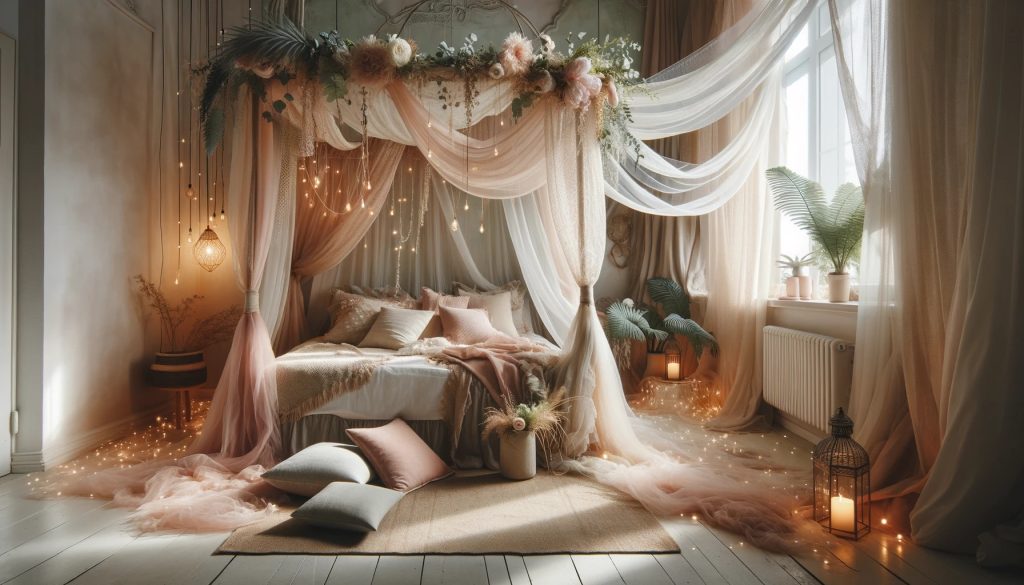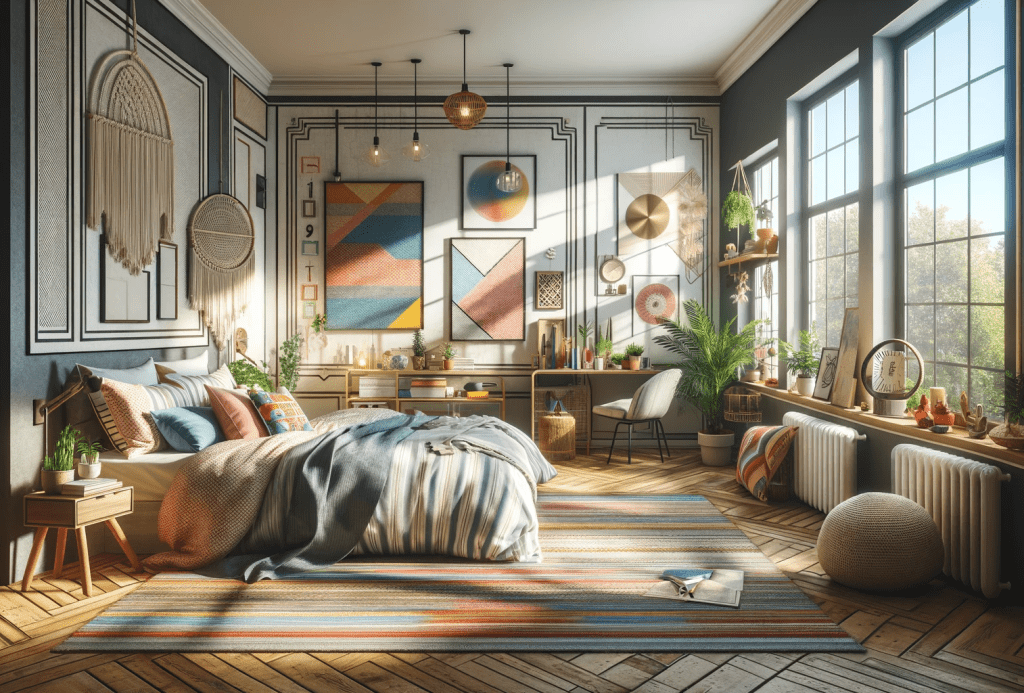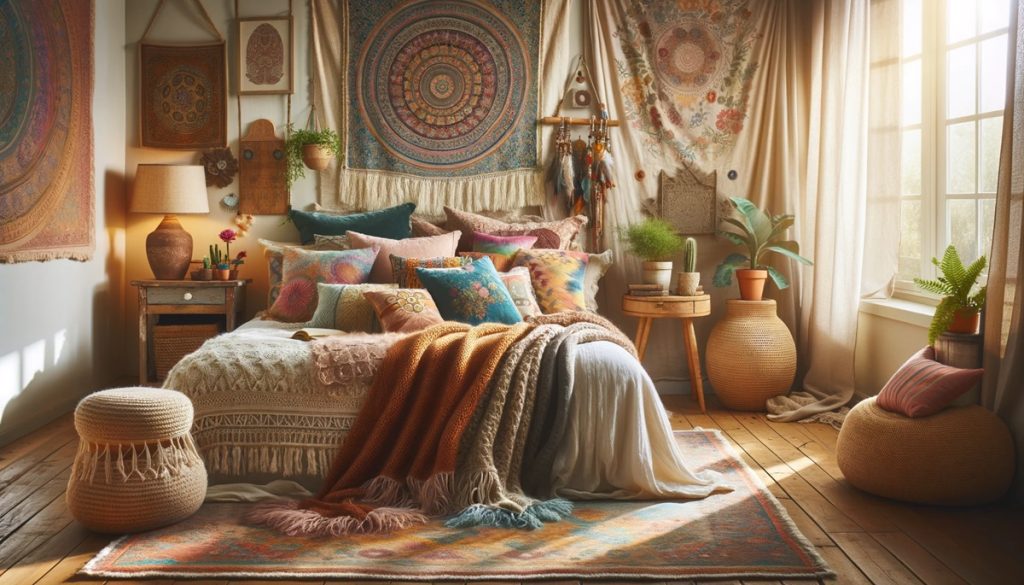Have you ever wondered if there’s a hidden beauty in the imperfections of your living space? What if embracing these quirks could transform your apartment into a haven of tranquility and charm? Welcome to the enchanting world of Wabi-Sabi with our collection of 29 Wabi Sabi apartment ideas that celebrate the perfectly imperfect. From minimalist decor to organic materials, each idea invites you to appreciate the beauty in the wear and tear of everyday life, turning your apartment into a sanctuary where every flaw tells a story. Let’s explore how this ancient philosophy can infuse peace and authenticity into your urban dwelling.
Embracing Imperfect Textures

Incorporate materials with natural, imperfect textures such as unpolished wood or coarse linen. These elements celebrate the authentic beauty and unique character that wabi-sabi embodies.
Natural Wood Furniture
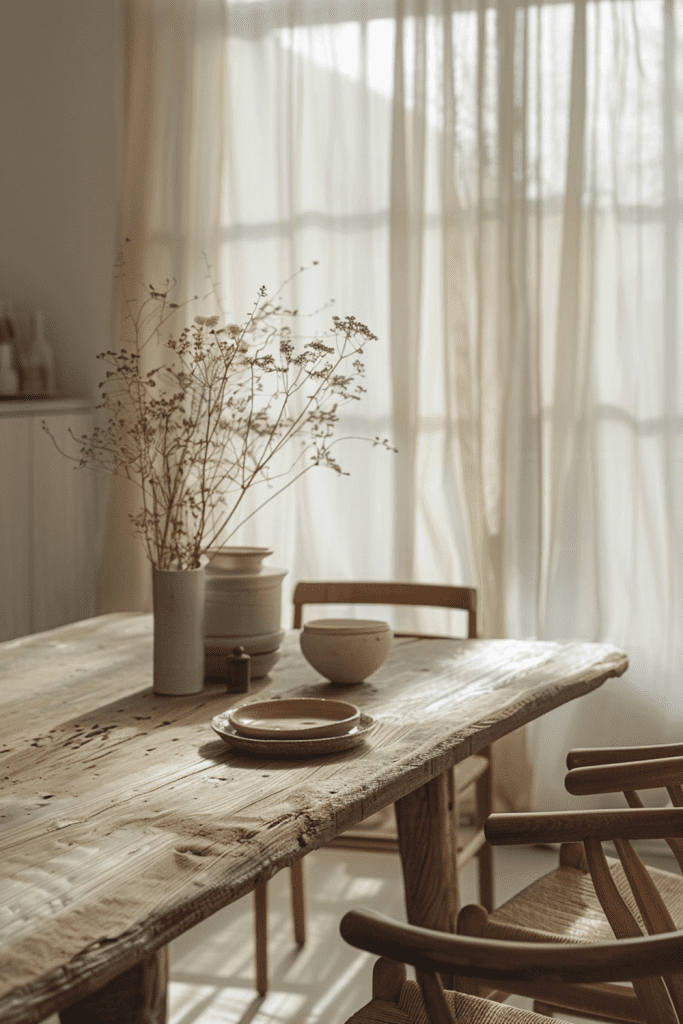
Use furniture made from natural wood that shows off knots, grain, and the inherent imperfections of the material. This furniture brings warmth and a grounding element to any space, aligning perfectly with wabi-sabi principles.
Handcrafted Ceramic Accents

Include ceramic accents that are visibly handcrafted, featuring irregular shapes and textures. These pieces add a personal touch and celebrate the beauty of human imperfection.
Muted, Earthy Color Palettes
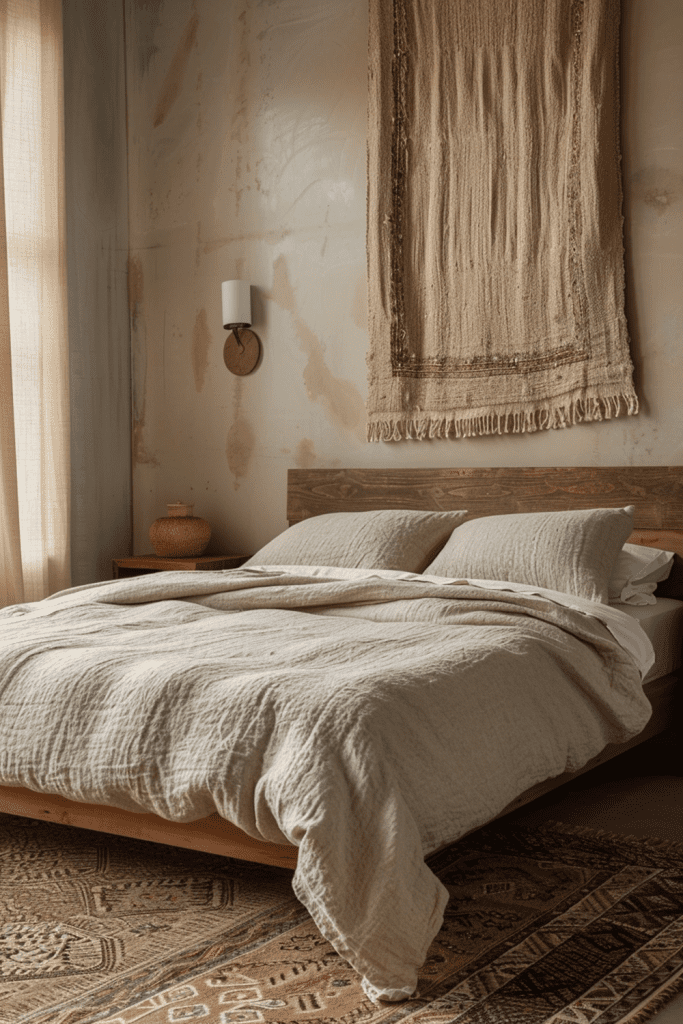
Opt for wall colors and decor in muted, earthy tones that evoke a sense of calm and are rooted in the natural world, reflecting wabi-sabi’s connection to earth and simplicity.
Organic Linen Fabrics
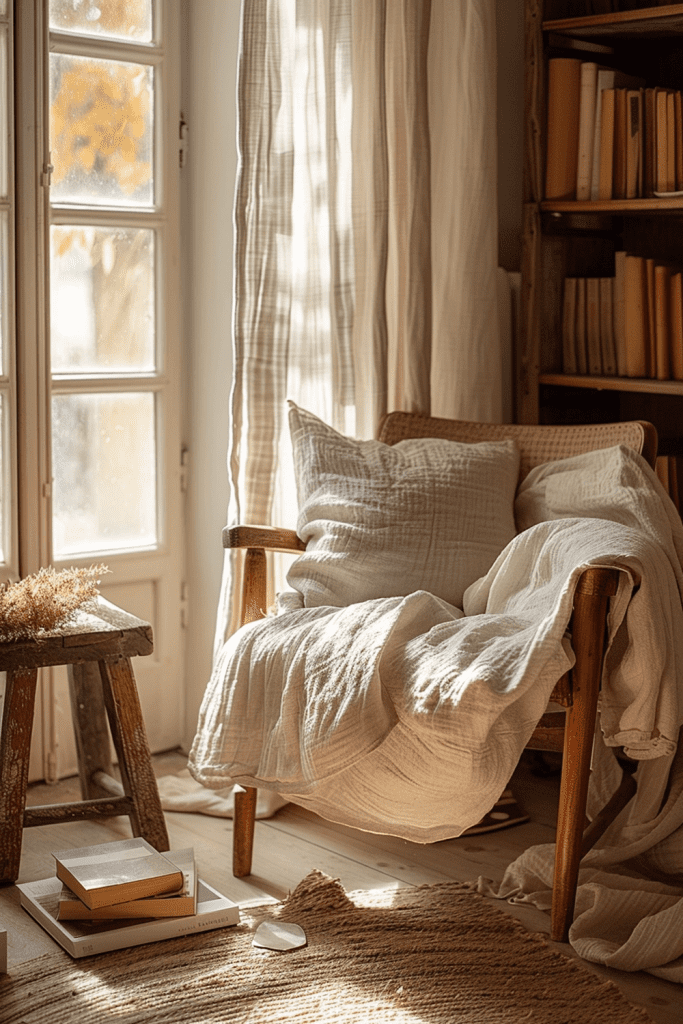
Decorate with organic linen fabrics that show natural creases and textures, emphasizing comfort and simplicity over precision and neatness.
Minimalist Layouts with Character
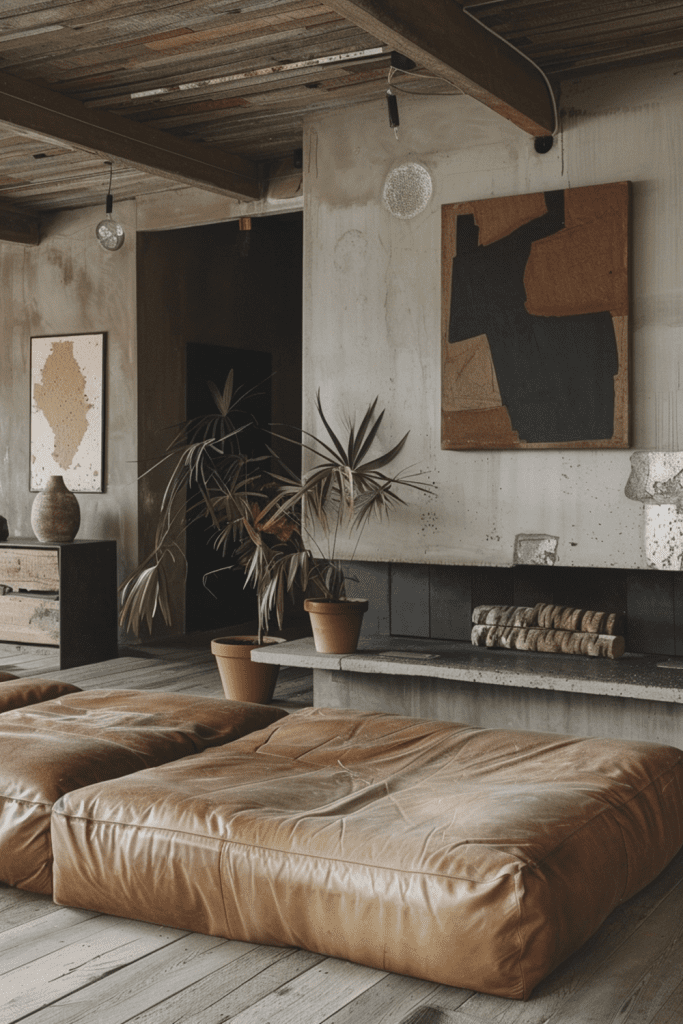
Design spaces that are minimalist but filled with objects that have character and history, such as an old wooden bench or a vintage lamp.
Asymmetrical Wall Art
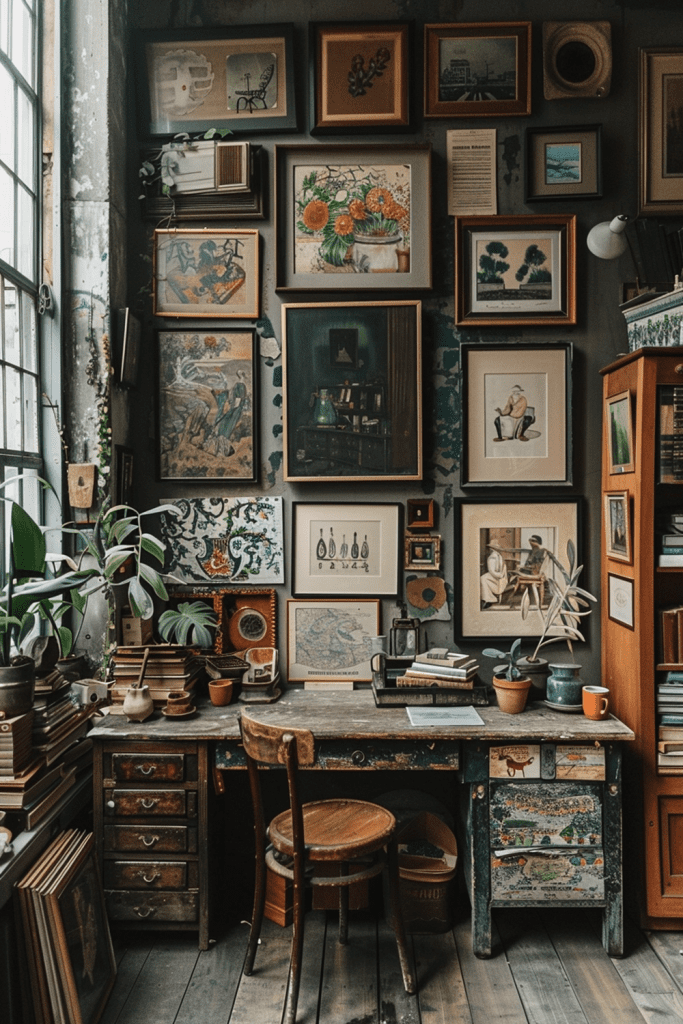
Hang wall art that is asymmetrical or abstract, celebrating the beauty of imperfection and non-conformity, key aspects of wabi-sabi decor.
Vintage Finds and Antiques
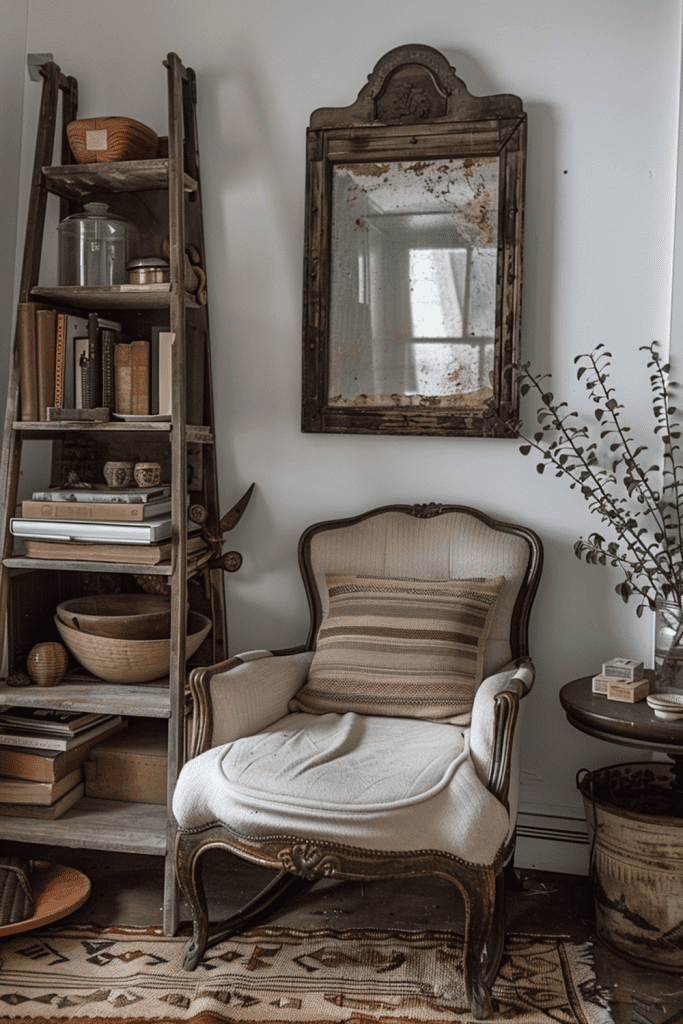
Incorporate vintage finds and antiques that show wear and patina, which tell a story and add depth to your home’s aesthetic.
Rough-Hewn Stone Elements
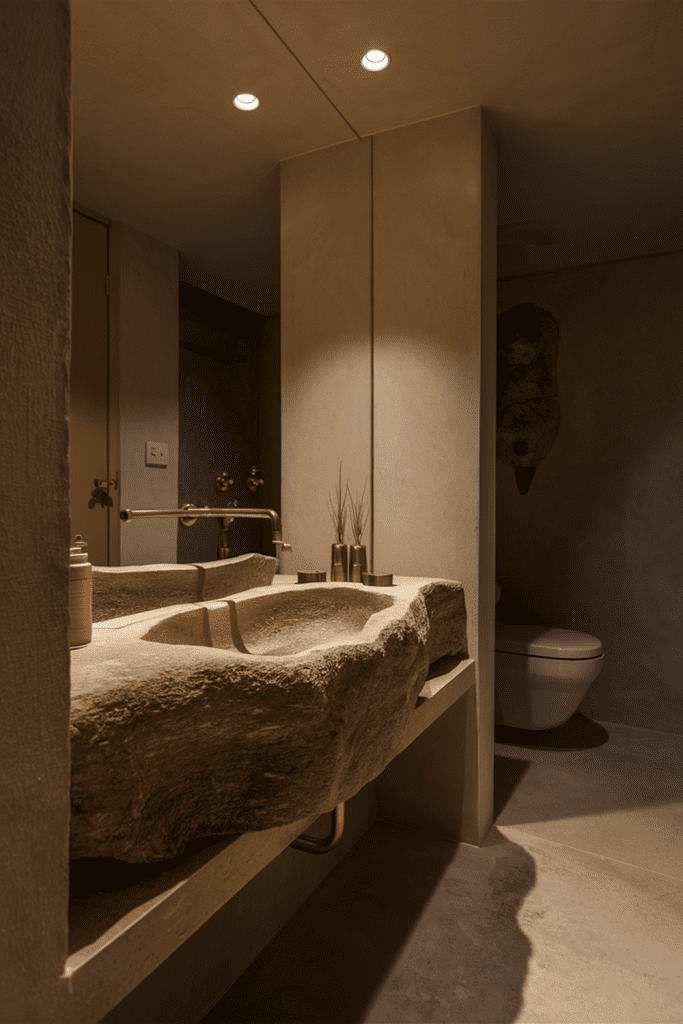
Use rough-hewn stone in decor or architectural elements to bring an unrefined, earthy quality to your space, resonating with the wabi-sabi philosophy.
Simple, Functional Kitchenware
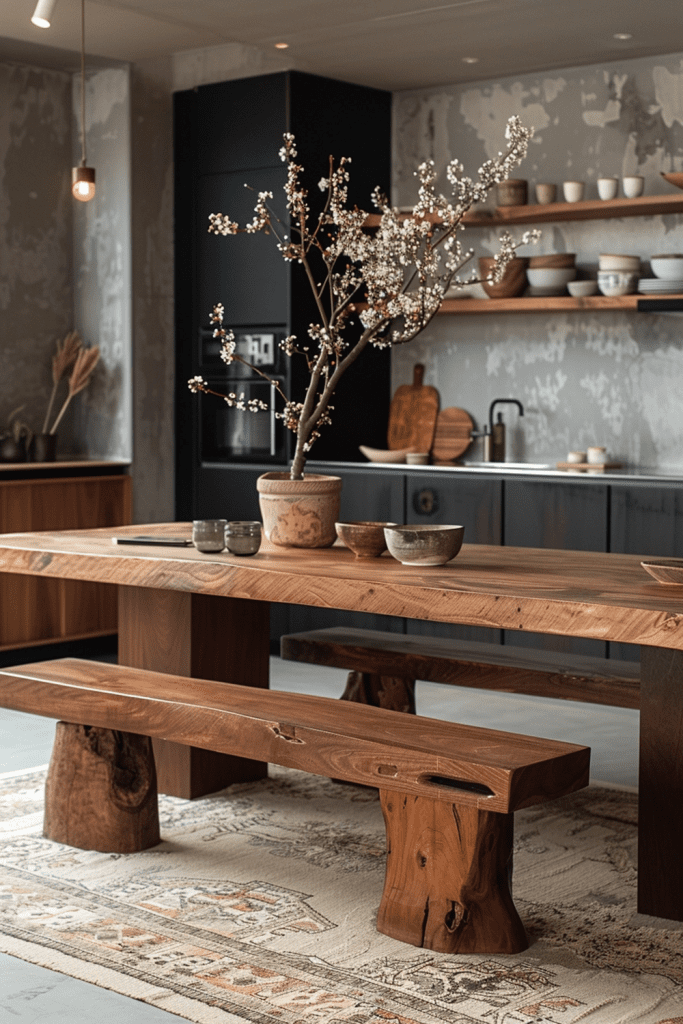
Choose kitchenware that is simple and functional but shows the marks of craftsmanship or natural wear.
Low, Unstructured Seating
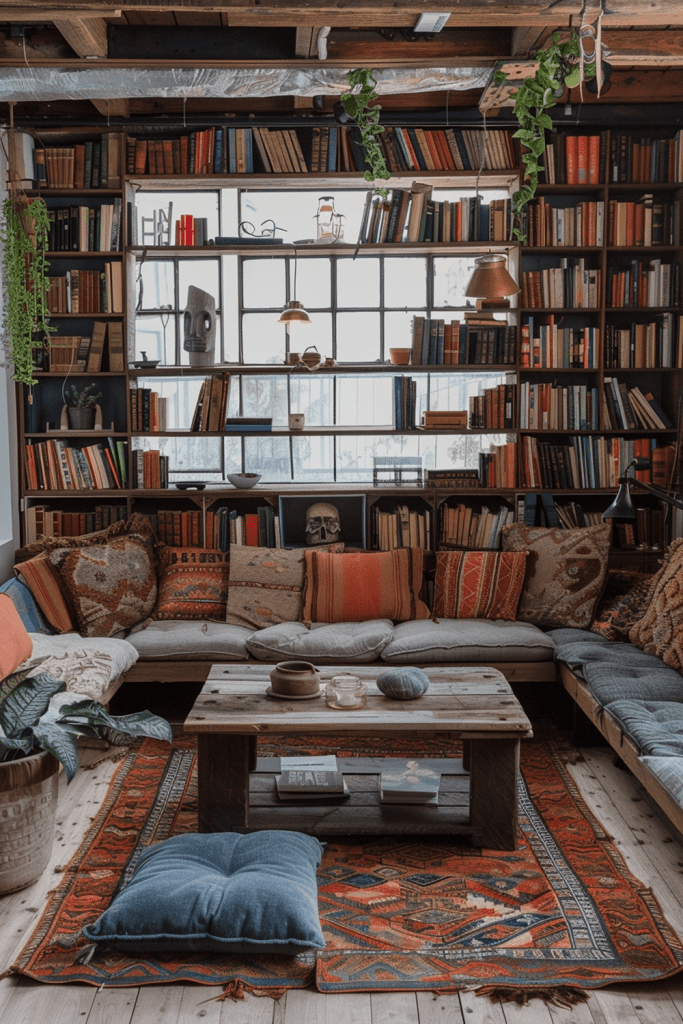
Opt for low, unstructured seating options like floor cushions or low sofas that invite relaxation and informal use, suitable for a wabi-sabi living environment.
Exposed Brick and Natural Plaster
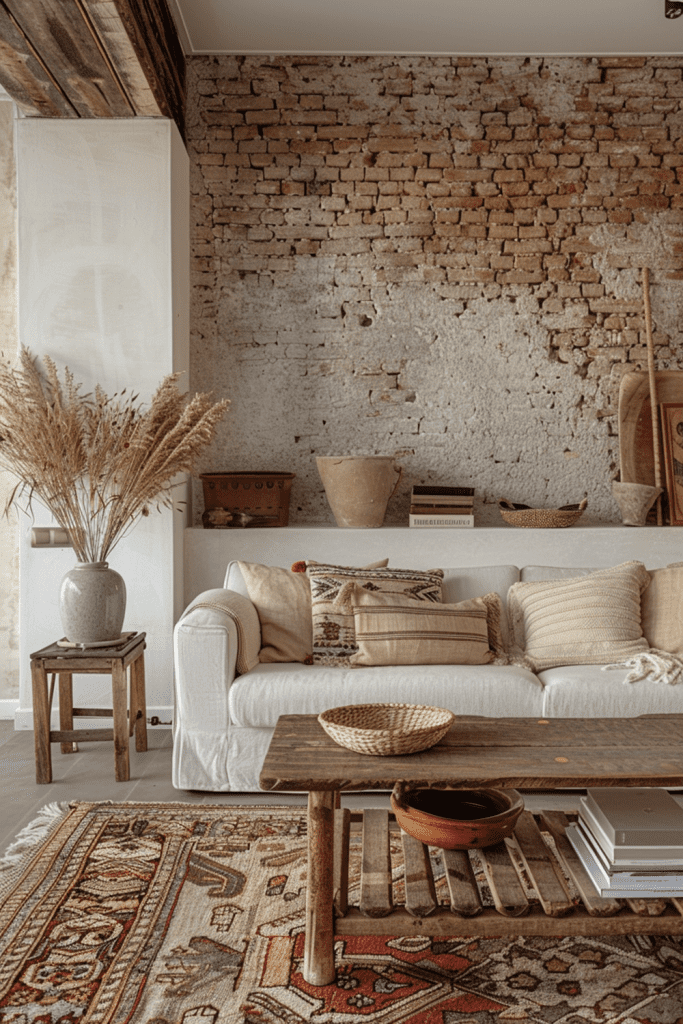
Feature walls of exposed brick or natural plaster to highlight natural textures and the imperfection of materials, embracing the aesthetic of decay and repair.
Handwoven Baskets and Rugs
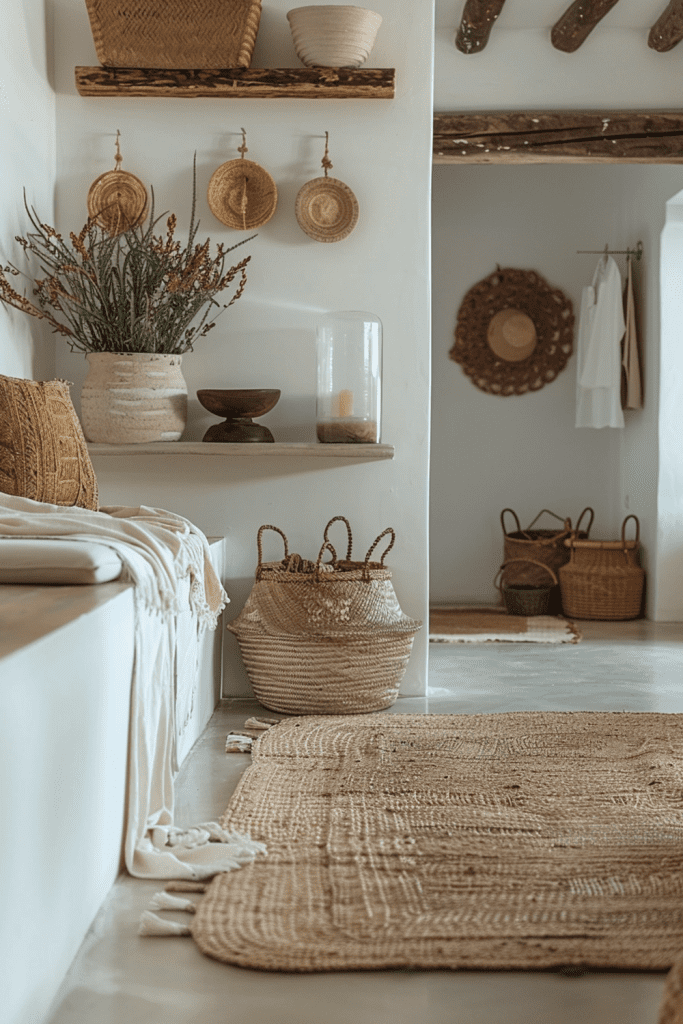
Include handwoven baskets and rugs that display irregular patterns and natural variations, adding texture and artisanal quality to your decor.
Rustic Metal Fixtures
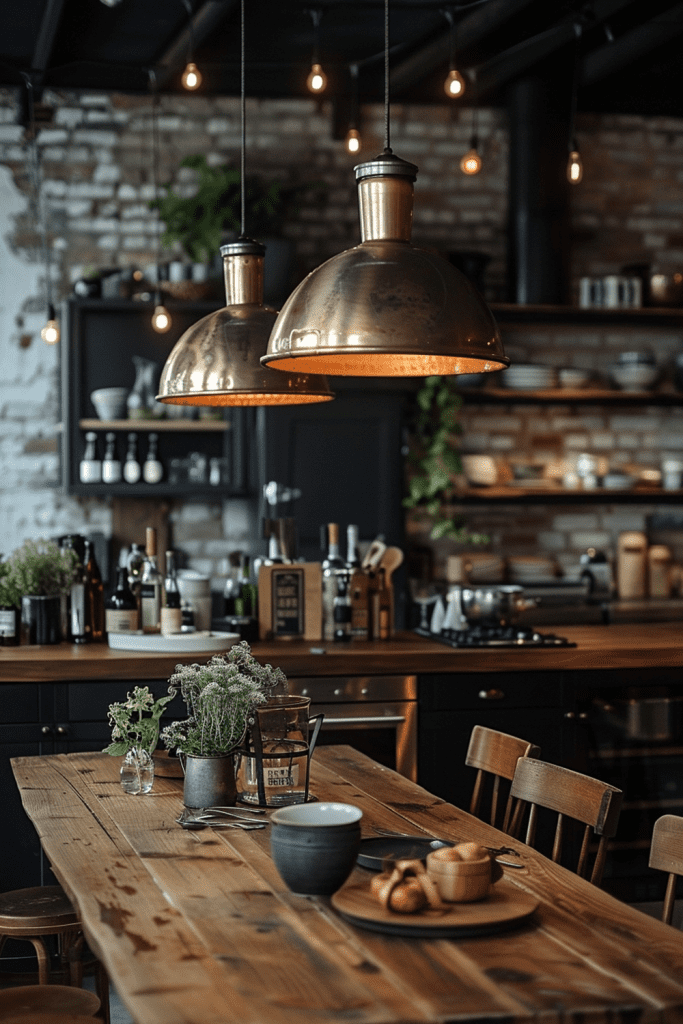
Incorporate rustic metal fixtures such as wrought iron candle holders or aged brass handles that show natural aging, enhancing the wabi-sabi charm.
Live-Edge Wooden Tables
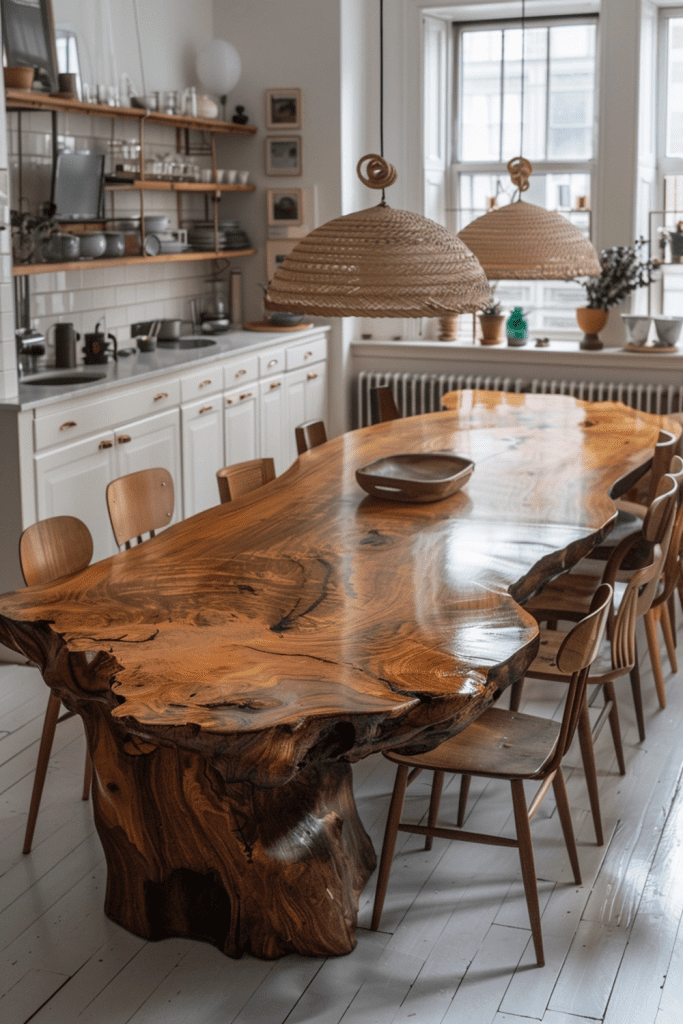
Use a live-edge wooden table as a centerpiece in your dining or living area, showcasing the natural, imperfect edge of the wood.
Aged Leather Upholstery
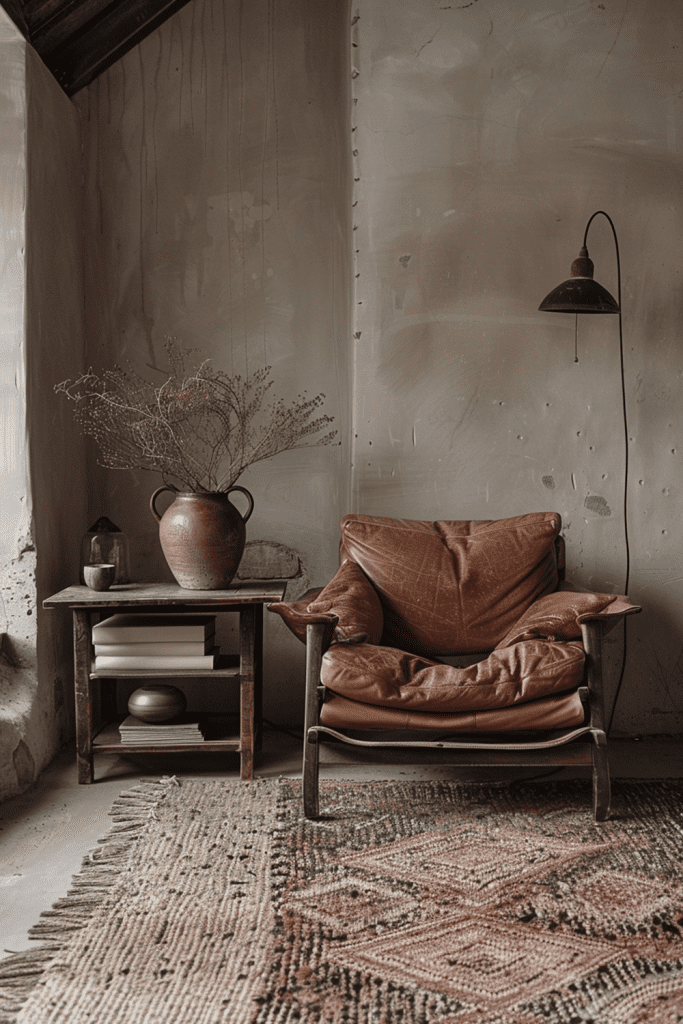
Choose leather upholstery that wears over time, developing a patina that adds character and beauty to the furniture, embodying the wabi-sabi spirit.
Soft, Uneven Lighting
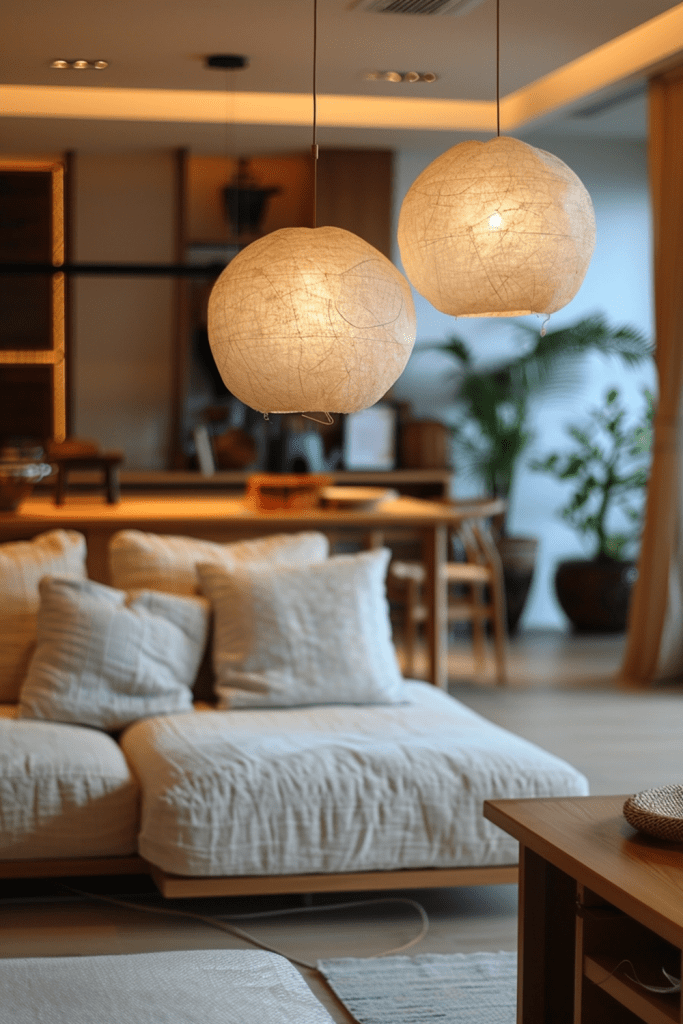
Install lighting that gives off a soft, uneven glow, using lampshades made from natural materials that create diffuse, shadowy effects.
Bonsai and Succulent Gardens
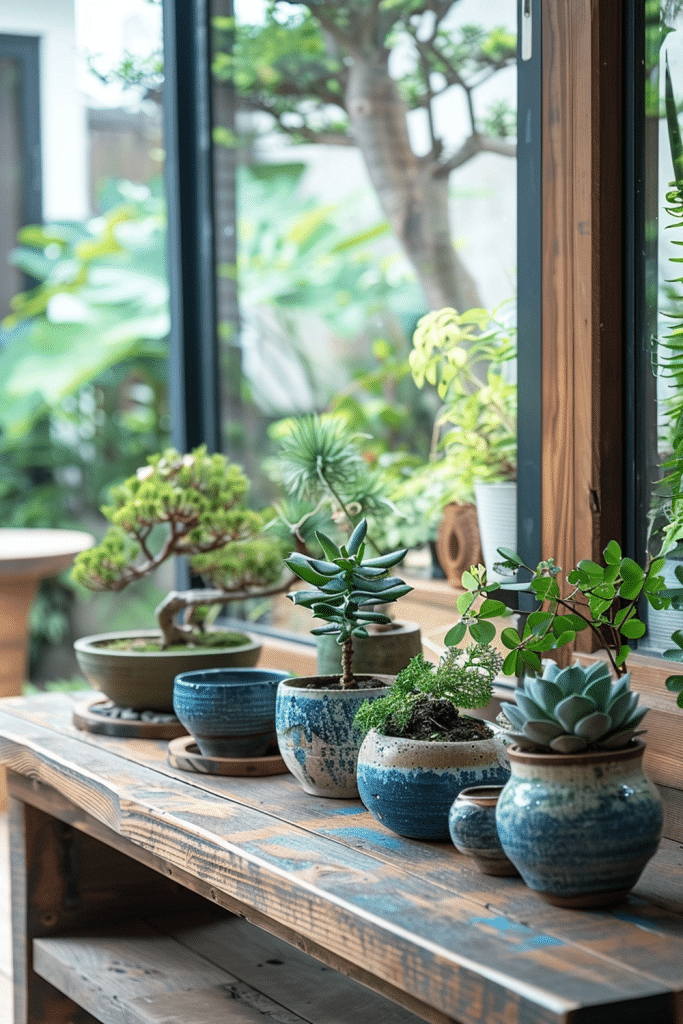
Create small indoor gardens with bonsai or succulents, which reflect the wabi-sabi themes of nature, simplicity, and quiet growth.
Reclaimed Wood Shelving

Utilize shelving made from reclaimed wood, showing signs of previous use and age, which adds a story and visual interest to your storage solutions.
Zen-Inspired Spaces

Design zen-inspired spaces that focus on balance, flow, and the beauty of minimalism, using elements like pebbles, bamboo, and water features.
Imperfect Pottery Displays
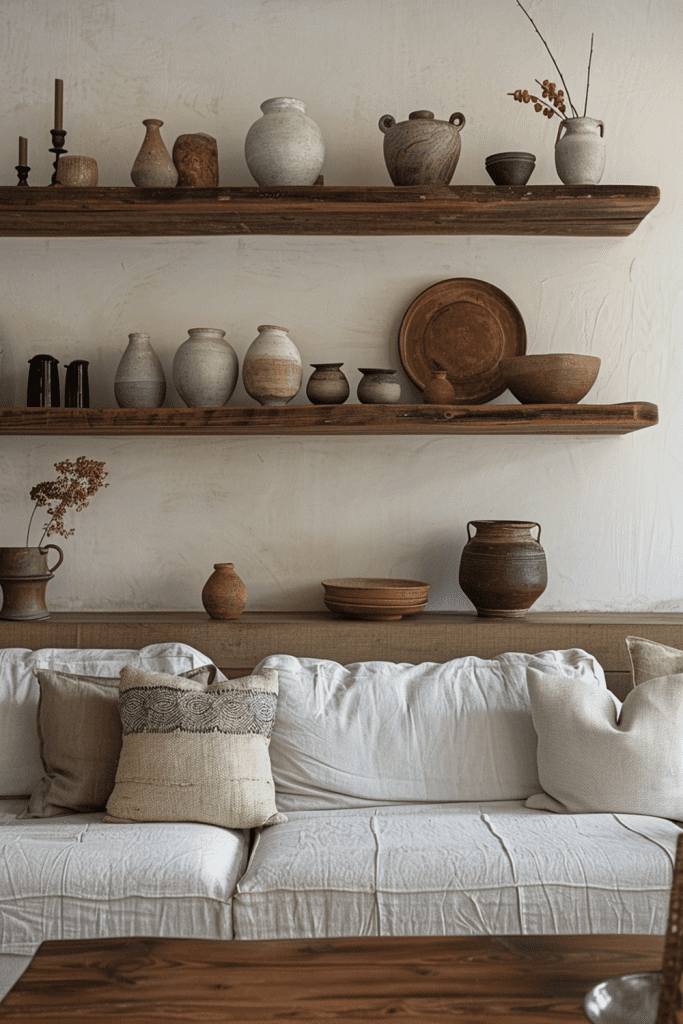
Display collections of pottery that are imperfect or slightly flawed, celebrating the wabi-sabi appreciation for beauty in imperfection.
Earth-Toned Bedding
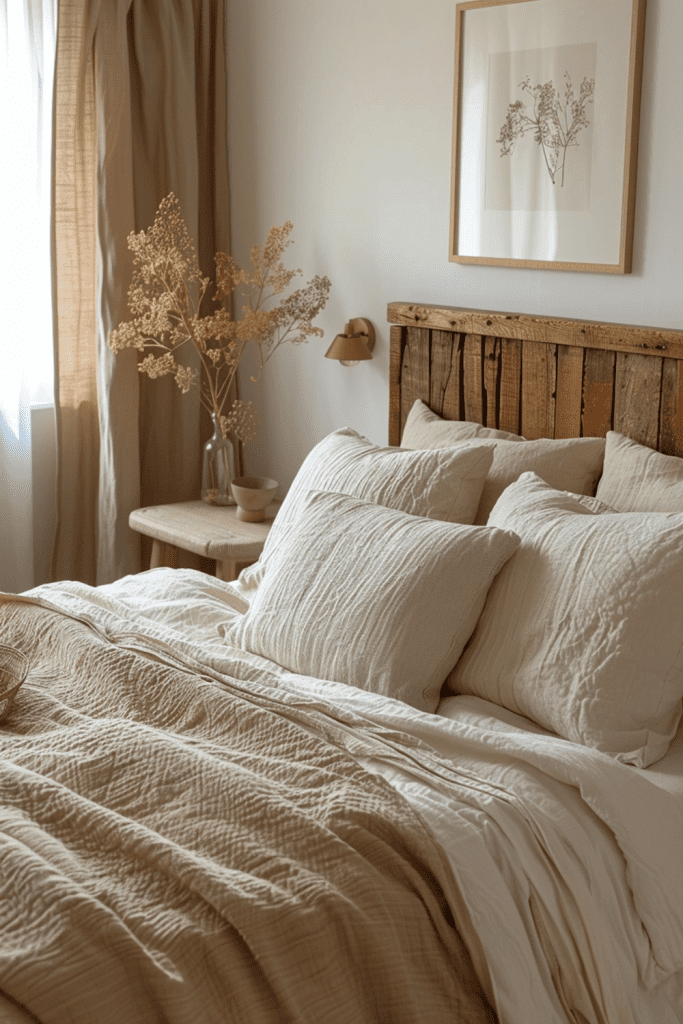
Choose bedding in earth tones that offer a soft, lived-in look, promoting relaxation and a connection to the natural world.
Mismatched Wooden Chairs
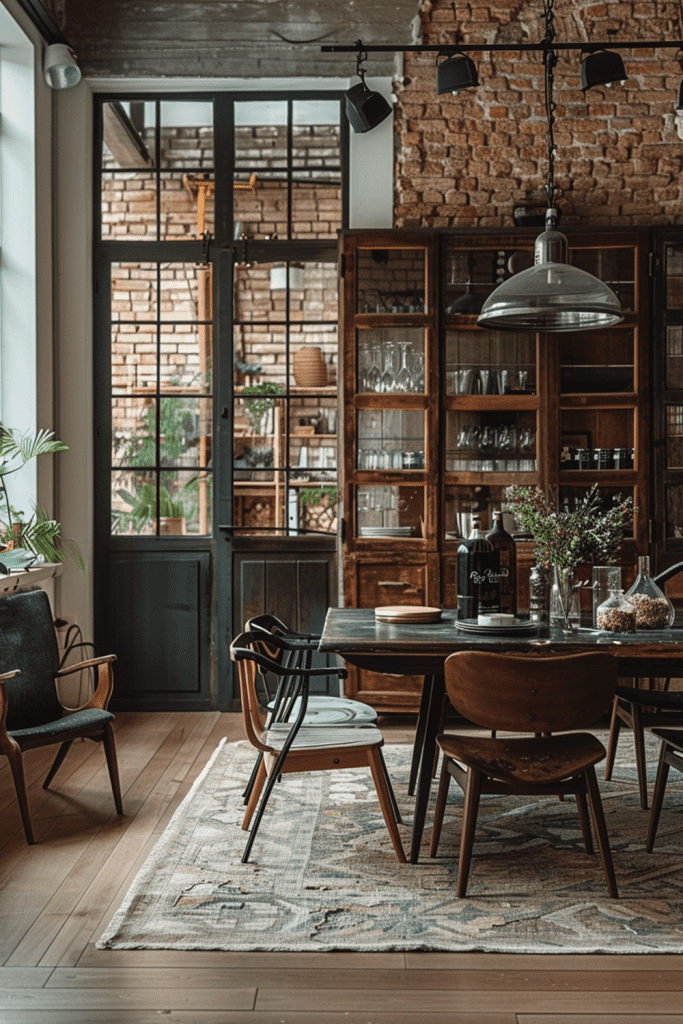
Gather a collection of mismatched wooden chairs around your dining table, each with its unique history and character, perfectly imperfect.
Handmade Paper Lampshades

Use lampshades made from handmade paper, which show texture, fiber, and imperfections, adding a soft, diffused light to your rooms.
Bare Concrete Floors
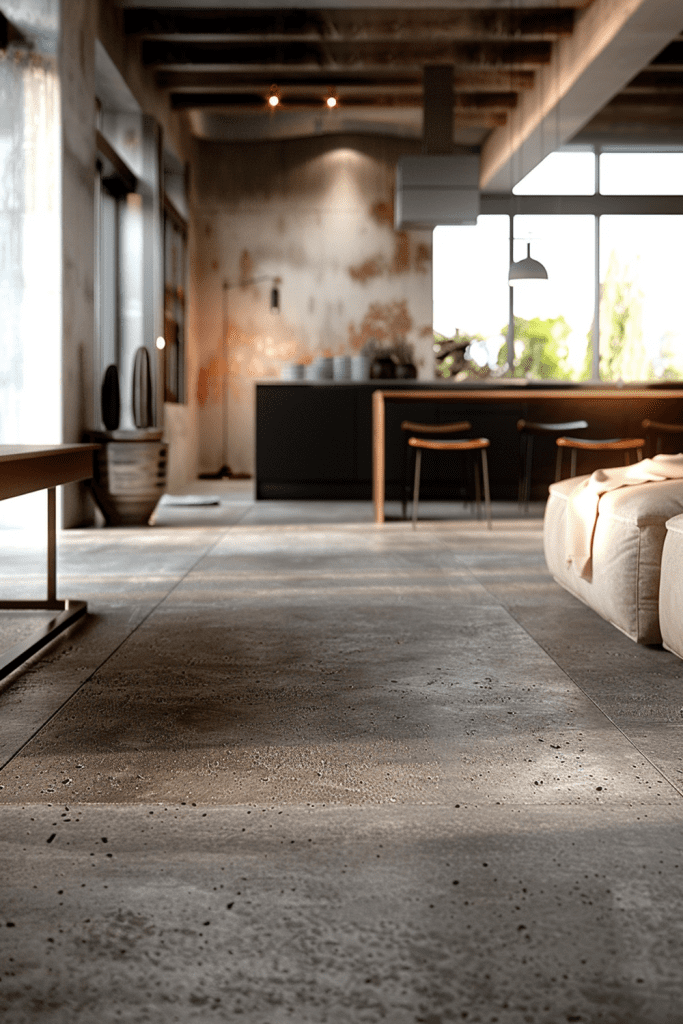
Embrace the raw, unfinished look of bare concrete floors, which are ideal for a wabi-sabi aesthetic due to their simple, industrial feel.
Salvaged Doors and Windows

Install salvaged doors and windows that show wear and tell a story, adding a sense of history and imperfect beauty to your space.
Freestanding Bathtubs

Include a freestanding bathtub that serves as a statement piece, often featuring organic shapes and natural materials that align with wabi-sabi decor.
Repurposed Industrial Elements
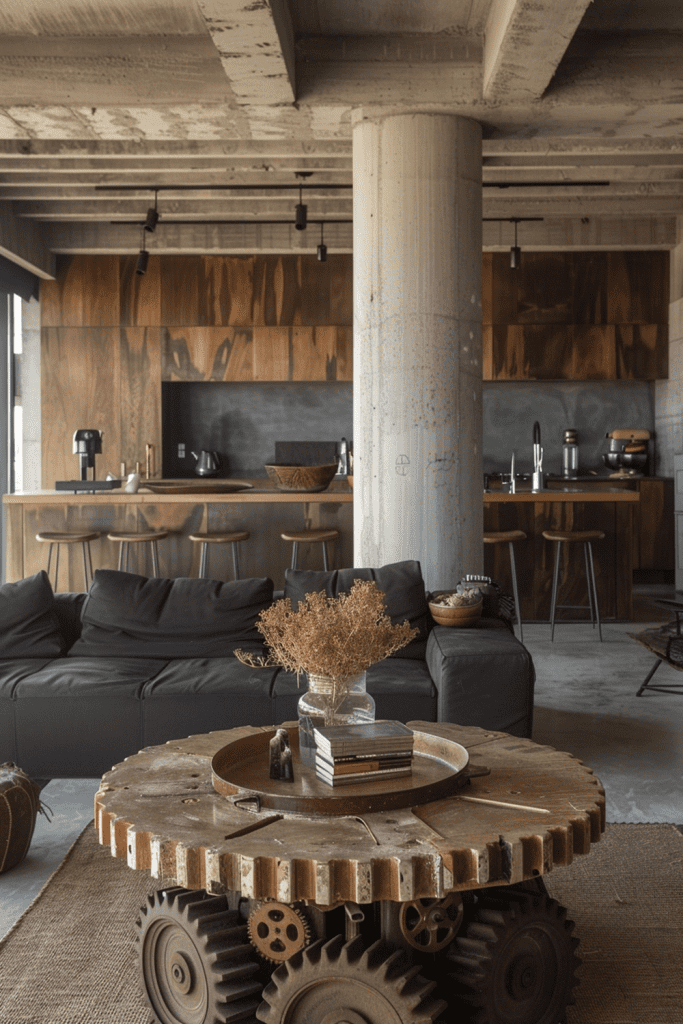
Incorporate repurposed industrial elements like old gears, pipes, or metal frames as decor, which reflect the wabi-sabi themes of reuse and the beauty of aging materials.
Cracked and Crazed Glazes
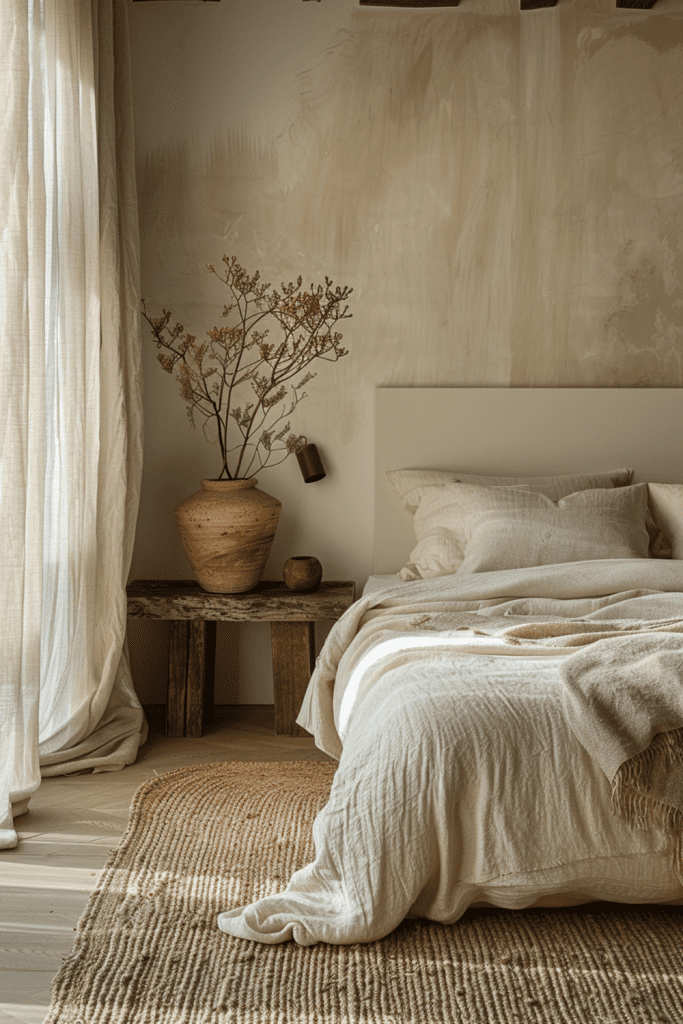
Display ceramics with cracked or crazed glazes, which celebrate the beauty in their flaws and the natural process of aging and wear.
Conclusion
Incorporating Wabi-Sabi into your apartment doesn’t just transform your living space; it changes your perspective. By embracing the beauty of imperfection, each of these 29 ideas invites calmness, appreciation, and a deeper connection to the environment around us. Whether you choose to introduce rustic textures, natural elements, or serene asymmetry, Wabi-Sabi decor reminds us that true beauty lies in the authentic and the transient. Start your journey towards a more mindful and aesthetically fulfilling home environment by integrating these Wabi-Sabi principles into your apartment, creating a sanctuary that celebrates imperfection as not just acceptable but as an art form.

